Weird Weapons: Strange Artifacts in the US Navy's Archives
Naval Archives

Karen France, head curator for the Collections Management Division of the Naval History and Heritage Command, showed Rear Adm. Kate Gregory, commander of the Naval Facilities Command and Chief of Civil Engineers, weapons in the historic small arms vault during a tour in 2013. The division is combing through its archives to make sure all items are correctly catalogued.
Gold-Plated AK-47
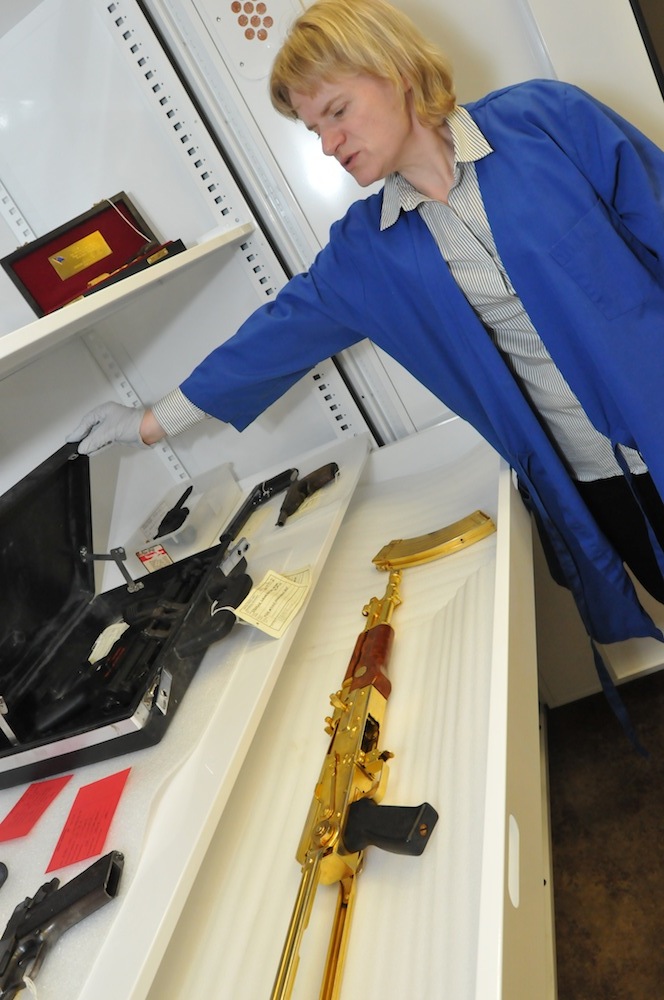
Julie Kowalsky, the small arms curator with the Collection Management Division of the Naval History and Heritage Command at the Washington (D.C.) Navy Yard, displays a gold-plated AK-47 taken in Iraq during Operation Iraqi Freedom. The weapon was most likely used in formal ceremonies. On the shelf is a briefcase submachine gun that was donated to the CMD by an NCIS Field Office.
Gold-Plated AK-47
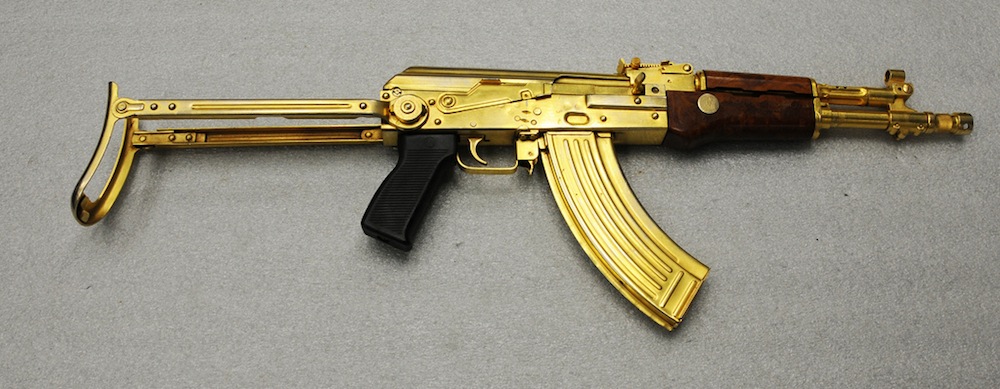
A close view of a gold-plated AK-47 captured in Iraq.
Gift Pistols
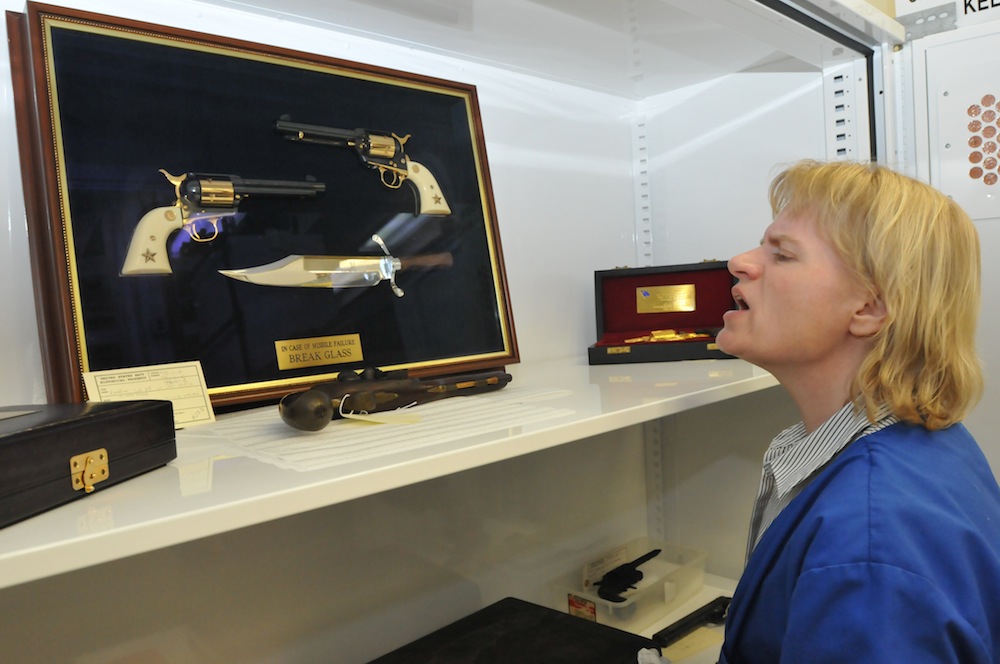
Julie Kowalsky, the small arms curator with the Collection Management Division of the Naval History and Heritage Command at the Washington (DC) Navy Yard, reads off the display card about the gift of two .45 caliber Alamo model Colt revolvers and knife set given to the cruiser USS Texas for her Sept. 10, 1977 commissioning by Ross Perot, a former naval officer and future presidential candidate.
Experimental Weapons
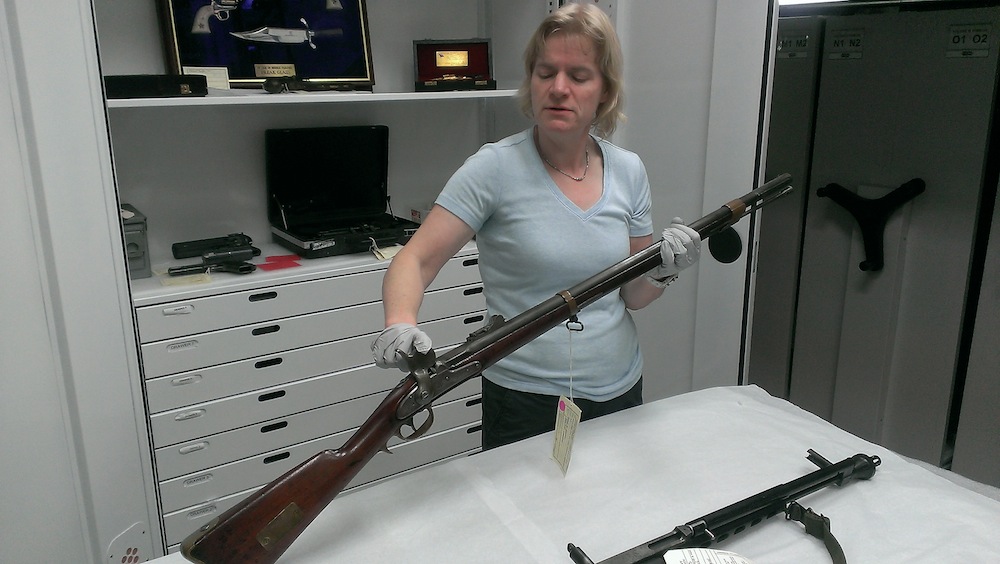
Julie Kowalsky, the small arms curator with the Collection Management Division of the Naval History and Heritage Command at the Washington (D.C.) Naval Yard, shows experimental weapons designed by naval ordnance innovator Capt. John A. Dahlgren.
Mini-Machine Gun
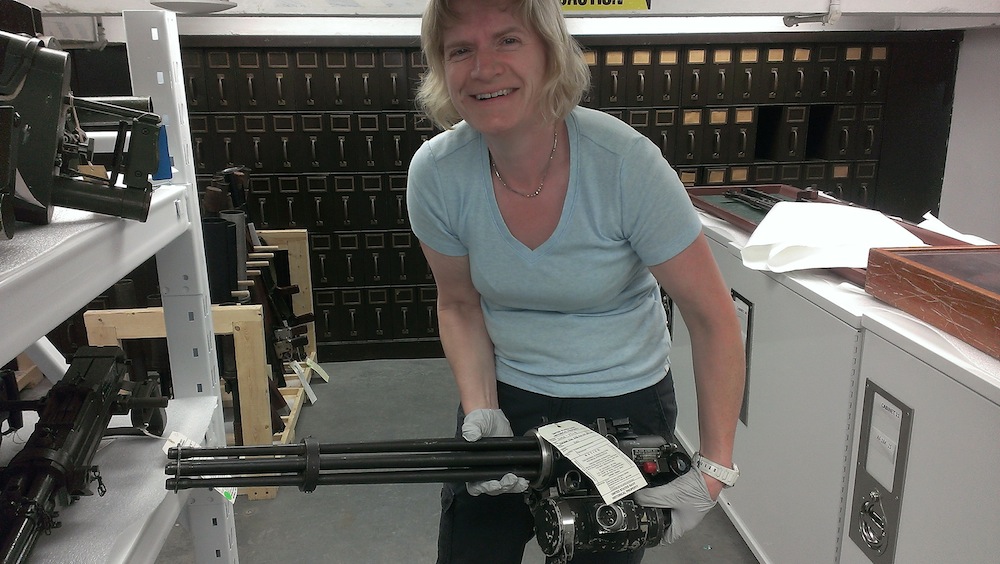
Julie Kowalsky holds up an experimental minigun. This mini-machine gun never went into production.
Gold-Plated Gun
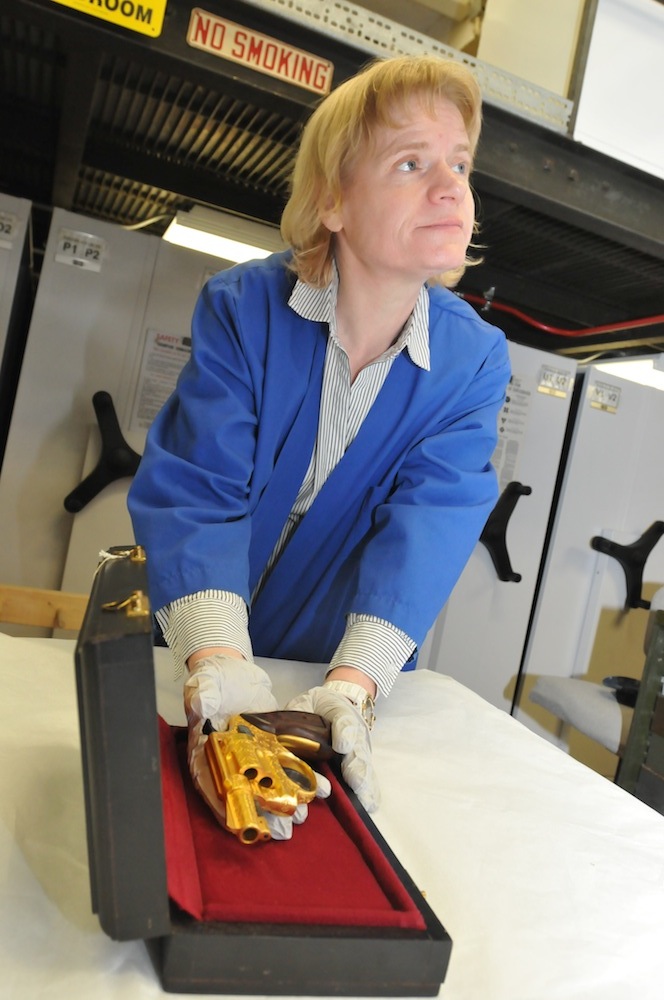
Small arms curator Julie Kowalsky shows the gold-plated and engraved pistol given to Chief of Naval Operations Adm. Thomas B. Hayward during a visit to Brazil in 1982.
Get the world’s most fascinating discoveries delivered straight to your inbox.
Japanese Grenade
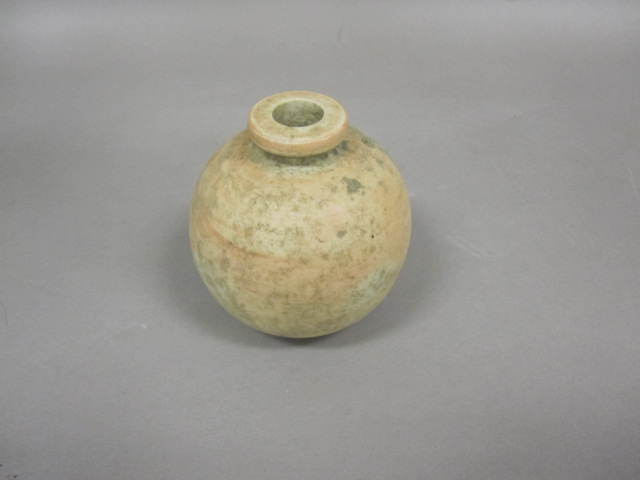
A ceramic grenade taken from Japan during World War II. Near the end of the war, when metal was scarce, the Japense military turned to ceramics.
Civil War Amputation Kit
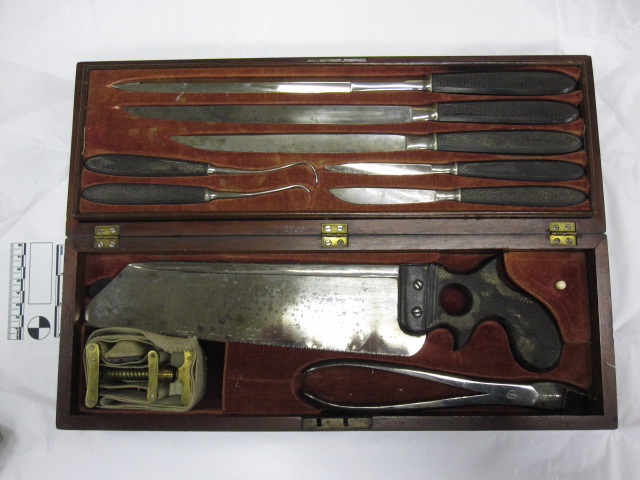
An amputation kit from the Civil War held in the Navy's archives.
Souvenir Lamp

A souvenir lamp in the Naval collection. The painting is of the USS Enhance MSO 437, a minesweeper.
Sept. 11 Laptop

A partially melted laptop taken from the Pentagon after the 9/11 attacks. This laptop is held in the Naval archives.

Stephanie Pappas is a contributing writer for Live Science, covering topics ranging from geoscience to archaeology to the human brain and behavior. She was previously a senior writer for Live Science but is now a freelancer based in Denver, Colorado, and regularly contributes to Scientific American and The Monitor, the monthly magazine of the American Psychological Association. Stephanie received a bachelor's degree in psychology from the University of South Carolina and a graduate certificate in science communication from the University of California, Santa Cruz.


